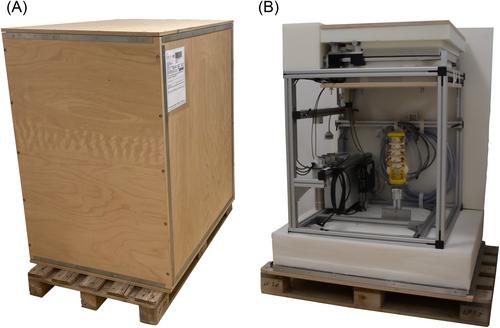Often after large animal experiments in spinal research, the question arises—histology or biomechanics? While biomechanics are essential for informed decisions on the functionality of the therapy being studied, scientists often choose histological analysis alone. For biomechanical testing, for example, flexibility, specimens must be shipped to institutions with special testing equipment, as spine testers are complex and immobile. The specimens must usually be shipped frozen, and, thus, biological and histological investigations are not possible anymore. To allow both biomechanical and biological investigations with the same specimen and, thus, to reduce the number of required animals, the aim of the study was to develop a spine tester that can be shipped worldwide to test on-site.
The “Spine Tester TO GO” was designed consisting of a frame with three motors that initiate pure moments and rotate the specimen in three motion planes. A load cell and an optical motion tracking system controlled the applied loads and measured range of motion (ROM) and neutral zone (NZ). As a proof of concept, the new machine was validated and compared under real experimental conditions with an existing testing machine already validated employing fresh bovine tail discs CY34 (n = 10).
The new spine tester measured reasonable ROM and NZ from hysteresis curves, and the ROM of the two testing machines formed a high coefficient of determination R2 = 0.986. However, higher ROM results of the new testing machine might be explained by the lower friction of the air bearings, which allowed more translational motion.
The spine tester TO GO now opens up new opportunities for on-site flexibility tests and contributes hereby to the 3R principle by limiting the number of experimental animals needed to obtain full characterization of spine units at the macroscopic, biomechanical, biochemical, and histological level.



